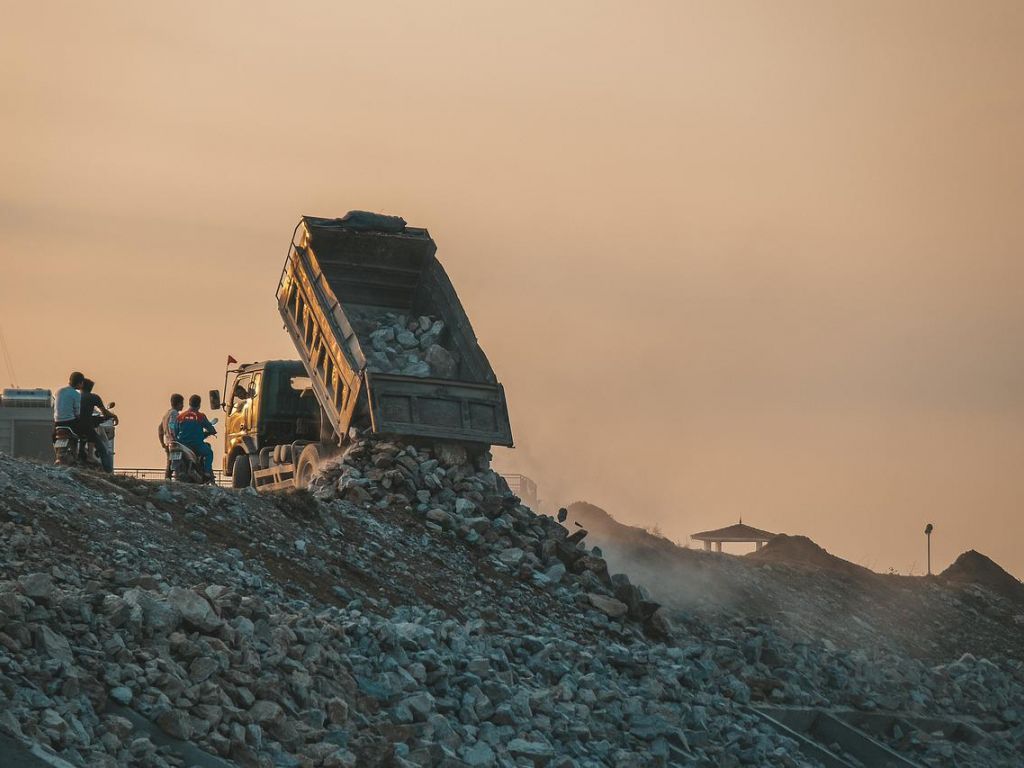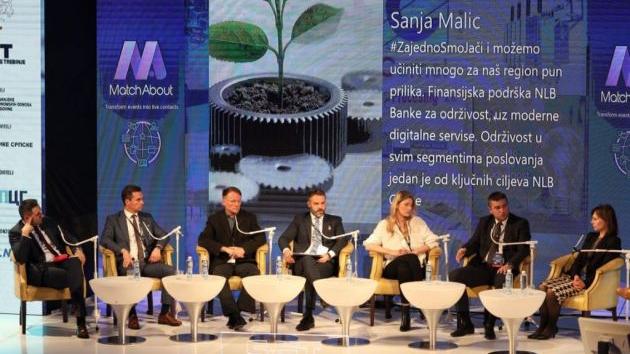Region between landfills and incinerators - How can waste become new energy currency in Serbia, Montenegro and Bosnia and Herzegovina?
Source: eKapija
 Tuesday, 01.04.2025.
Tuesday, 01.04.2025.
 22:28
22:28
 Tuesday, 01.04.2025.
Tuesday, 01.04.2025.
 22:28
22:28
Illustration (Photo: congerdesign from Pixabay)

While European countries have been using this technology for decades, the region is still catching up with global trends. Serbia took the first steps by opening an incinerator in the VinÄŤa neighborhood of Belgrade, while in Montenegro and Bosnia and Herzegovina, the best models for the introduction of such plants are still being sought.
Namely, in Serbia, in November of last year, the first plant of this type was opened in the Belgrade neighborhood of Vinča, and there are also plans to build similar plants in Niš and Kragujevac, while Čačak has been mentioned recently. Montenegro has not yet built a waste incinerator, although the possibility of its construction has been debated for several years, particularly in Podgorica. At present, waste is predominantly deposited in landfills, which is a challenge given the limited space and environmental standards which the country must meet on the way to the EU. In Bosnia and Herzegovina, there were initiatives to build waste incineration plants, particularly in Sarajevo and Banja Luka, but the projects ran into hurdles due to regulation, environmental concerns and funding. For now, the waste is mostly disposed of in landfills, and some of it is recycled.
Vinca works, plans for Niš, Kragujevac and Čačak
Out of a total of 640,000 tons of waste produced annually in Belgrade, 340,000 tons will be used in the incinerator in VinÄŤa for the production of thermal and electrical energy which will be delivered to the citizens of Belgrade.
According to estimates, thermal energy from this plant will meet the needs of about 10% of households in the capital, while electricity will cover about 5%.
- The rest of the waste will be disposed of at a new sanitary landfill, which can be challenging,
because the quantities are significantly higher than the contracted ones. We are actively working with the City to find new solutions - Vladimir Milovanović, the director of the company Beo cista energija, said earlier.
Plant in VinÄŤa (Photo: Shutterstock/Dragan Mujan)

Waste management program in the Republic of Serbia for the period from 2022 to 2031 envisages the construction of three plants for the controlled burning of municipal waste. One plant is located in Belgrade, the other two municipal waste incineration plants and for the production of electricity and thermal energy from non-recyclable waste are planned in Nis and Kragujevac.
As stated on the Clean Serbia website, the construction of the Regional Center for Waste Management is planned in Nis, which will include a thermal valorizer – a plant for co-incineration of solid mixed municipal waste with a capacity of up to 250 tons per day. The center will have all the accompanying contents, including a landfill, a leachate treatment plant and an administration building.
Apart from the production of electricity, the thermal valorizer will also produce hot water, which can be used for heating buildings. For the construction of the complex, an area of 500,000 m² is planned,
while rehabilitation and reclamation of the existing sanitary landfill will cover 135,700 m².
The cities and municipalities of Sokobanja, Prokuplje, Blace, Žitorađa, Kuršumlija, Merošina, Ražanj, Doljevac, Aleksinac, Svrljig and Gadžin Han will join the regional center in Niš, thus the waste management system will cover a total of 484,094 inhabitants.
A similar Regional Waste Management Center is planned in Kragujevac, with a thermal valorizer of the same capacity - up to 250 tons of waste per day. The plant will produce electricity and thermal energy, along with all the necessary supporting facilities.
The total area of the planned center is 450,000 m², while 128,600 m² is planned for the rehabilitation of the existing unsanitary landfill.
This center will also serve the municipalities of Knić, Topola, Rača, Arandjelovac, Gornji Milanovac, Rekovac and Batočina, covering a total of 339,256 inhabitants.
The city authorities in Čačak announced the construction of a waste incineration plant as a potential solution to the waste disposal problem that plagues this city. Last year, the mayor of Čačak, Milun Todorović, stated that Čačak needs a long-term solution, namely the construction of a modern recycling center with a waste incinerator. Čačak, however, has no money for that big investment.
- A permanent solution is an incinerator, like those of Celje and Trieste. They also get energy that their institutions use. We have been working on that solution for a year now. We need state help, a project, a permit. With that, we could apply for funds from European funds. Čačak doesn`t have the money to start such an expensive investment - Todorović said earlier.
(Photo: eKapija)

BiH is far from a waste incinerator
The existing waste management system in Bosnia and Herzegovina still relies on municipal waste disposal as the basic method of treatment. There are certain differences in FBiH and RS. Collection and recycling of certain types of municipal waste are regulated and operators are designated for such types of waste, for example for packaging waste, Professor Azrudin Husika of the Faculty of Mechanical Engineering in Sarajevo tells eKapija.
- Some local communities are establishing recycling yards and conducting pilot projects of selective waste collection all with the aim of using a part of the waste and thereby reducing the pressure on waste landfills. The concept of regional landfills has only partially taken root, mainly due to issues of transport and warehousing costs. The largest number of local communities dispose of municipal waste at unorganized landfills with the exception of several regional sanitary dumps. There are problems with the impact of landfills on the local population due to inadequate locations and illegal construction, which is particularly pronounced in the Sarajevo Canton - Husika points out.
Construction of incinerators in larger cities, such as Sarajevo and Banja Luka, would be important for reducing the space required for waste disposal, lower transport costs, energy security due to the replacement of imported fuels, stable source of electricity, development of circular economy and many other potential benefits. However, as our interlocutor points out, all of this depends on many factors, and indicates that this does not mean that waste management costs would be lower.
- There are several technologies for energy production from municipal waste. Incinerators are one of the technologies developed. However, regardless of technology, using waste for energy production must be part of the municipal waste management system. The waste management system must be based on waste prevention and minimization practices as well as reuse, and only then to think about using the energy potential. Therefore, such a system should be established in which all recyclable components are used, and to produce energy from the rest.
He adds that it depends on the municipal waste collection system. As Husika points out, fuel can be made from municipal waste, which can then be efficiently used in industry and for energy production.
- Assuming that adequate waste management systems are established, the role of waste incinerators in cities, such as Sarajevo, Banjaluka and others, depends on local development planning. What problems would be solved depends on the waste management concept part of which would be a plant for energy production from waste. In the case of an inadequate waste management system, it is not excluded that new problems may arise.
Husika believes that the problems with the communal waste disposal area would be significantly alleviated, but a significantly smaller part of the waste would still be disposed of in the landfill compared to the existing quantities.
- The obtained energy could be used for district heating purposes, and electricity for transmission to the power grid. The problem related to the use of heat energy is related to the location of the incinerator because it is difficult to find an adequate location in the vicinity of the settlement, which is why it is expensive to build heat pipes for connecting to district heating. In addition, the question arises as to how to use the heat outside the heating season. A very important question is what are the existing and planned sources of heat for district heating in terms of the dynamics of production, but also production costs. It should be emphasized that there are heat sources for district heating
which have lower production costs, but all the benefits of utilizing the energy potential of waste should be considered and a decision on that basis should be made.
In response to our observation that former Prime Minister Edin Forto stated in 2019 that the Smiljevići landfill can be closed by building a waste incinerator, that its construction would cost KM 240 million, Husika points out that the mentioned investment estimate for the Smiljevići landfill was probably reliable at the time.
- Today it is at least 20-30% higher. However, it may be better to close the existing landfill with remedial measures, and the incinerator, or another facility for utilizing the energy potential of waste,
to be made at another location for newly generated waste. This needs to be analyzed for each local community.
As a rule, larger plants are more sustainable because the investments are per unit of power i.e. capacities at smaller plants are very high. From this it follows that a prerequisite for financial sustainability is a relatively large concentration of population in one area. Because of this, a relatively small number of local communities are able to plan waste incinerators. For environments that have about 20-30 thousand tons of composted waste for the incinerator, after separating the part that can be recycled, the investment is of the order of KM 30-40 million.
How realistic is it that BiH will get an incinerator in the near future?
- Considering the required investments and the necessary preconditions that affect sustainability, I think that in the near future, that is, in the next 5 years, we will have no waste incinerators. In addition, there is great opposition from the population to the construction of such plants - Husika points out.
Illustration (Photo: Pixabay / khoinguyenfoto)

A long way to the incinerator in Montenegro, and capacity of the landfill is nearing its end
Montenegro is also facing serious challenges in the area of waste management and among the biggest are certainly the limited capacities of existing landfills and the lack of adequate infrastructure for waste processing. There are two regional landfills in the country - Deponija d.o.o. Podgorica and the MoĹľura Bar landfill - whose capacity is nearing its end.
Currently, in Deponija d.o.o. Podgorica the fourth sanitary bathtub is being filled, with the possibility of building six in total, said the executive director of that company Aleksandar Božović in an interview for eKapija. According to him, the accelerated growth in the amount of waste and the increasing number of municipalities that deposit waste at this landfill lead to the rapid filling of its capacities. Thus, the sanitary tub number 4, built in May 2023 reached, in just two years, about 65% occupancy.
- In addition, the inadequate waste management system in many municipalities contributes to the creation of illegal landfills, which represent a serious environmental problem and further increase the costs of waste transportation. These challenges point to an urgent need for improving the waste management system and finding long-term solutions - says Božović.
And the data of this company from Podgorica confirm that the amount of waste that ends up in landfills is constantly increasing from year to year. Thus, during the year 2023, to the landfill of the company Deponija d.o.o. Podgorica a total of 84,317.70 tons of waste has been delivered. This trend of increasing the amount of waste continued in 2024. so far a total of 100,115.74 tons of waste has been delivered.
- According to current trends, we expect that in 2025 it will be 120,000 tons. These data clearly indicate the accelerated filling of the landfill and the need for urgent solutions in the area of waste management - Božović points out.
That is why, he says, the construction of an incinerator in Podgorica would represent a strategic solution for improving the waste management system.
- In addition to reducing the pressure on existing landfills and eliminating illegal dumping sites, this project would enable the use of waste as a source of energy, which would reduce Montenegro`s energy dependence. Considering the fact that Montenegro imports significant quantities of energy, while waste with high energy potential remains unused, the development of this project could bring multiple benefits, both environmental and economic - our interlocutor points out.
Even though the construction of an incinerator in Podgorica has been talked about for several years, Božović says that there is still a long way to go before this project is realized.
- It is necessary to conduct detailed analysis, including environmental studies and financing models, to ensure that the incinerator is built in accordance with the highest environmental standards and to contribute to the sustainable development of Montenegro - Božović says.
As per earlier announcements, the construction of an incinerator would cost up to EUR 150 million.
This is also confirmed by our interlocutor, stating that the realization of this project requires funds in the amount of 120 to 150 million EUR.
- A feasibility study, which represents the first step in the process, amounts to about 1% of the total value of the project. After that, the development of a master project would be key to determining the most optimal technology which would be used in the waste management process - he explains.
He also says that a project like this requires careful planning and technology selection which would be ecologically acceptable and compliant with the highest environmental protection standards.
- The experiences of other countries have shown that modern incinerators can be an effective solution to the waste problem, with a minimal impact on the environment - Božović concludes for our portal.
Illustration (Photo: Anut21ng Photo/shutterstock.com)

Across Europe, more than 500 plants
In Europe, there are more than 500 waste incinerators that process around 101 million tons of municipal waste annually. The countries with a high level of thermal treatment of waste are Finland (61%), Sweden (60%), Norway (50%), Switzerland (48%), Belgium (44%), Denmark, Luxembourg and the Netherlands (41% each) and Austria (36%).
Croatia should get its first waste incineration facility within the Bikarac Waste Management Center, which is located in Ĺ ibenik-Knin County.
In 2016, Albania began plans to build three incinerators for waste control and energy production. However, this project, as reported by Radio Free Europe was soon embroiled in a corruption scandal, known as the "Affair with the incinerator", because of which former Minister of the Environment Ljeftera Koku (Leftera) ended up in prison. The indictment in that case is currently before the Appellate Court in Albania. Only one incinerator is currently in operation.
Ecological dilemmas
Although waste incinerators provide significant ecological and energy benefits, there are also certain ecological dilemmas associated with their use.
Although modern technologies enable efficient gas-filtering, incineration of waste can cause emissions of pollutants, such as carbon dioxide (CO2) and nitrogen oxides (NOx), as well as toxins such as dioxins and furans. Air pollution in the vicinity of the plant can also be a serious challenge, especially in areas with more incinerators.
Also, while incinerators reduce waste volume, the incineration process can result in the loss of useful resources which could be recycled, such as plastic and metal. Ash and residue management, which may contain toxic substances, represents an additional obligation for environmentally friendly operation of these plants.
Due to these challenges, many countries strive to place incinerators in the wider framework of sustainable waste management, where recycling and waste reduction at source are key goals.
Dragana Obradović, Slobodana Šubara, Ivana Žikić

Click here to see the entire Special Edition Newsletter
"ECONOMICALLY ECOLOGICAL - Green is the new black"
read more
Tags:
Smiljevići Regional Landfill
Faculty of Mechanical Engineering in Sarajevo
Podgorica Landfill
MoĹľura Bar Landfill
Aleksandar Božović
Azrudin Husika
waste incinerators
landfills
waste treatment
special edition newsletter economic ecological green is the new black
waste management
SEN green is the new black
Comments
Your comment
Naš izbor
Most Important News
Full information is available only to commercial users-subscribers and it is necessary to log in.
Follow the news, tenders, grants, legal regulations and reports on our portal.
Registracija na eKapiji vam omogućava pristup potpunim informacijama i dnevnom biltenu
Naš dnevni ekonomski bilten će stizati na vašu mejl adresu krajem svakog radnog dana. Bilteni su personalizovani prema interesovanjima svakog korisnika zasebno,
uz konsultacije sa našim ekspertima.


 Izdanje Srbija
Izdanje Srbija Serbische Ausgabe
Serbische Ausgabe Izdanje BiH
Izdanje BiH Izdanje Crna Gora
Izdanje Crna Gora


 News
News












